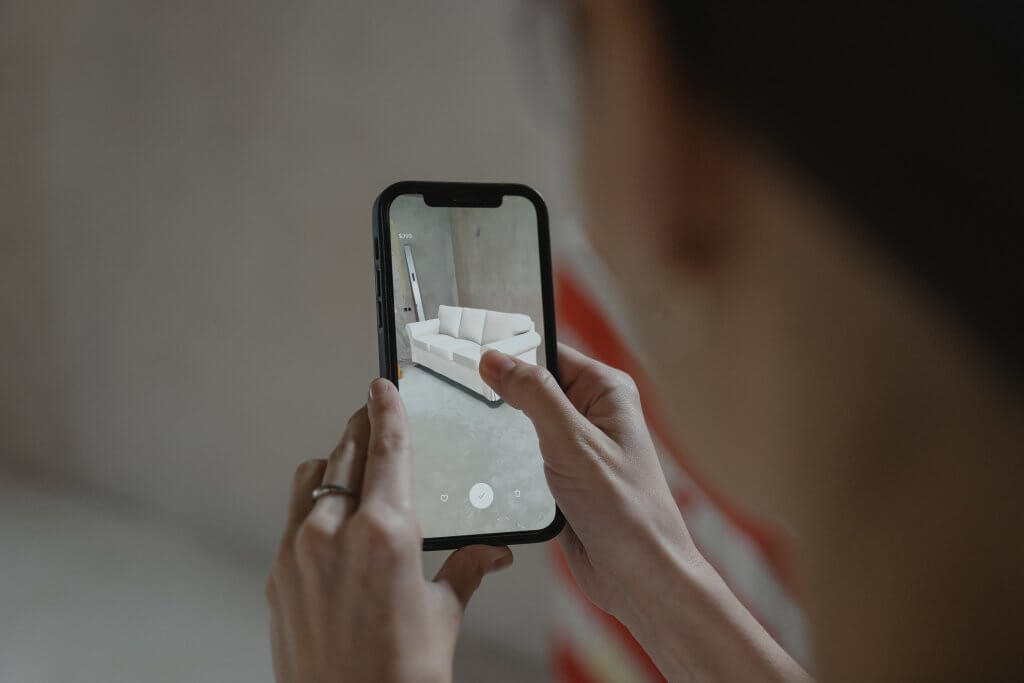
Augmented reality (AR) is a powerful technology that has the potential to revolutionize several industries. Using AR, people can superimpose digital content on real-world images and video via a smart device, such as a smartphone or computer.
AR technologies are increasing in popularity in recent years, and more organizations are implementing AR-powered offerings due to evolving customer expectations and ROI. For example, according to statistics compiled by XR Today,
- 75% of customers now expect retailers to offer at least an augmented reality experience to help them understand products.
- 71% of customers say they would shop more if they had access to AR.
- AR engagement has increased by 20% since early 2020, with high conversion rates (up by as much as 90%) for customers who engaged with AR as compared to those who were not offered an immersive experience.
There are several unique and exciting applications for augmented reality that support commercial and practical objectives.
Understanding Augmented Reality
Augmented reality refers to the enhancement of real-world environments with interactive digital components, including text, video, and photos. Many applications that use AR rely on a smartphone camera, which can be used to create a digitally enhanced world. However, screens, glasses, displays, and a variety of handheld devices are quickly gaining AR capabilities.
Augmented reality relies on sensors and algorithms to analyze a user’s surroundings and identify the position and orientation of his or her camera. After completing this analysis, the AR technology renders 3D graphics onto the real-life surroundings, making it seem as if the graphic exists in real life.
What Is the Difference Between Augmented Reality and Virtual Reality?
Many people confuse augmented reality with virtual reality, which is a close relative of this technology. Both augmented reality and virtual reality fall under the category of extended reality (XR); however, AR technology augments a user’s surroundings by overlaying imagery onto the real world.
On the other hand, virtual reality completely immerses a user in the experience using computer generated imagery and specialized hardware. While virtual reality experiences create completely synthetic environments, augmented reality enhances real-life surroundings with specialized hardware or even just a smartphone.
Watch this video for an example of a popular AR STEM game we built:
Powerful Applications for Augmented Reality
Augmented reality is very popular in the media and entertainment space. One example is Pokémon Go, a popular mobile game where users can catch virtual creatures on a mobile device. This app superimposes animated characters onto a user’s surroundings via a smartphone camera, immersing the user in the game experience in real time.
On social media apps like Snapchat, Instagram, and TikTok, users also have access to filters that alter their appearance or their environments. For newer iPhone models, built-in features like Memoji allow anyone to FaceTime or send messages with personalized AR characters. Using these AR-enabled filters, users can view themselves as a different age or gender, impose graphics and effects on videos, or even use beauty filters to enhance their appearance.
Aside from the entertainment space, there are several other powerful applications for augmented reality. Some of these use cases include the following:
- Medical educators are using augmented reality to teach students how to perform various procedures, boosting the depth and effectiveness of this training. Designers and architects are using AR technologies to visualize products and support the creative process, improving the efficiency of design and modeling.
- Stakeholders in the tourism industry are implementing AR experiences so that people can experience a location remotely, helping generate interests in various hotspots.
- Retailers are using AR to allow customers to visualize their products ranging from placing a new piece of furniture in the home to trying on a new pair of glasses.
- In the classroom, augmented reality is being used to enhance children’s learning experiences by providing hands-on experiences and richer learning environments. For example, children learning about the solar system can use AR to interact with rendered maps and drawings in real time.
Speak to an XR Specialist at HigherEchelon, Inc.
Are you ready to implement augmented reality solutions? Trust the specialists at HigherEchelon, Inc. to build these capabilities within your organization. Our selection of virtual and augmented reality solutions can take an idea from napkin to prototype to functioning application in a communication-rich process that brings the vision to life and takes users to next level performance.
Contact us today to schedule your consultation and learn more about our advanced technology capabilities.